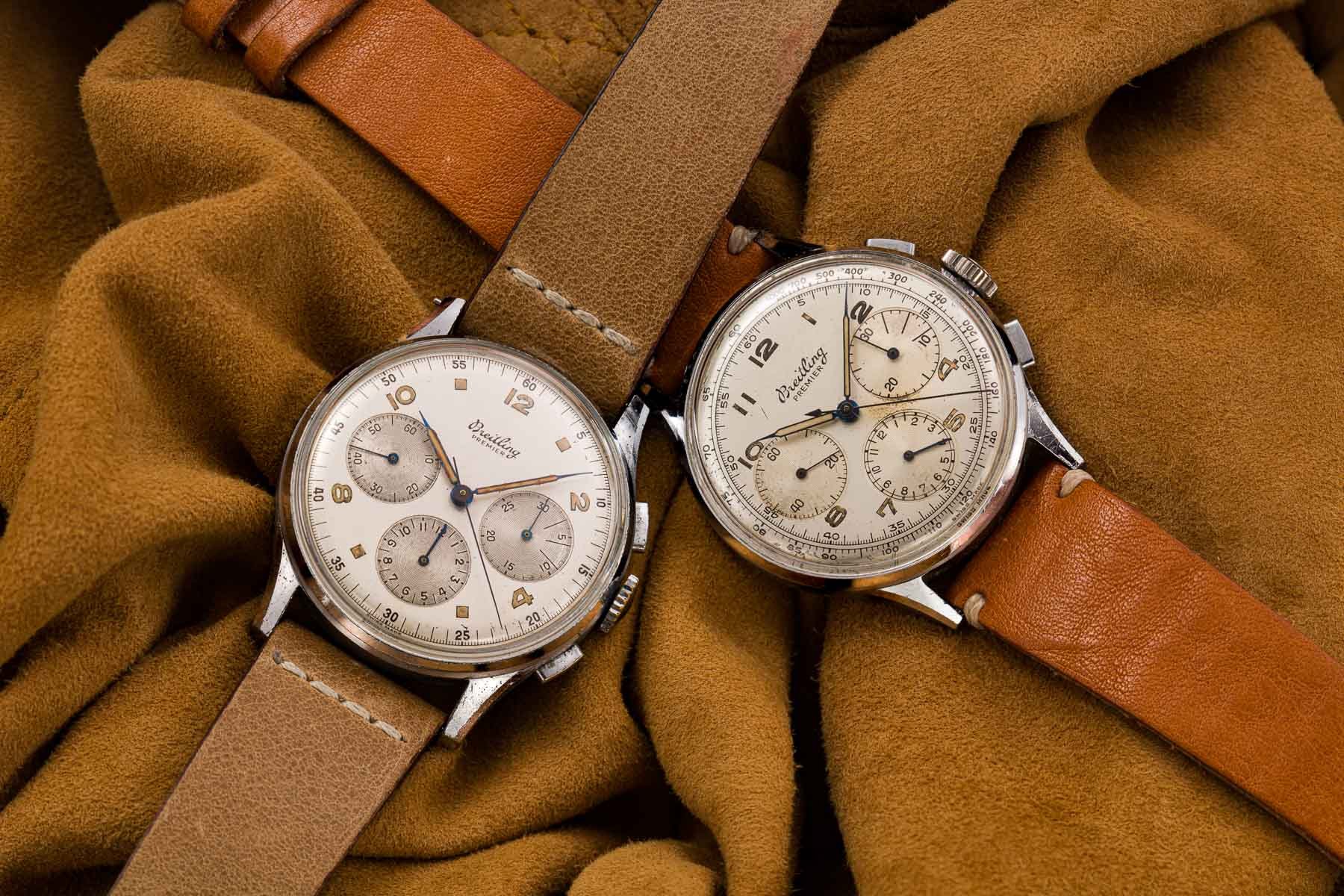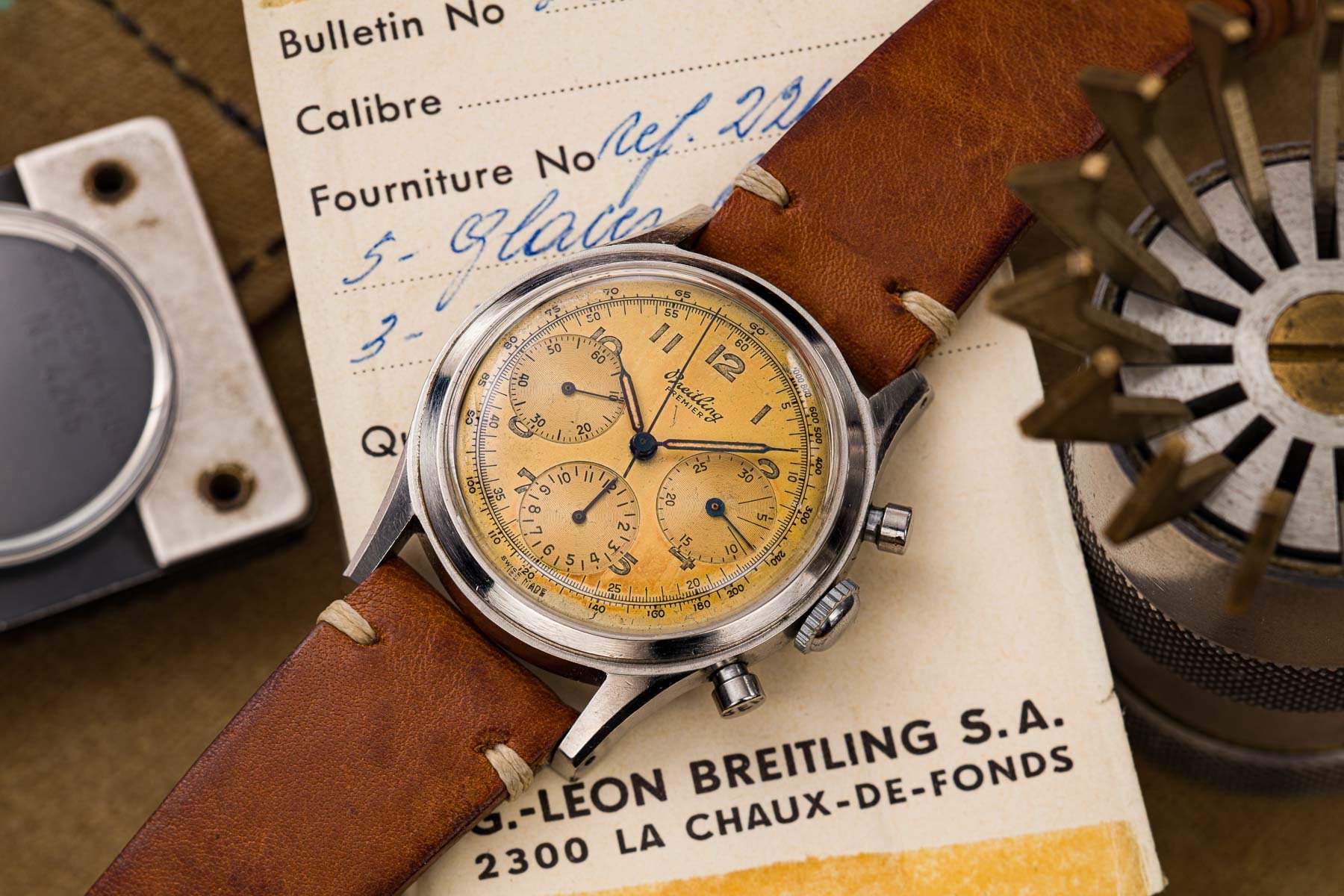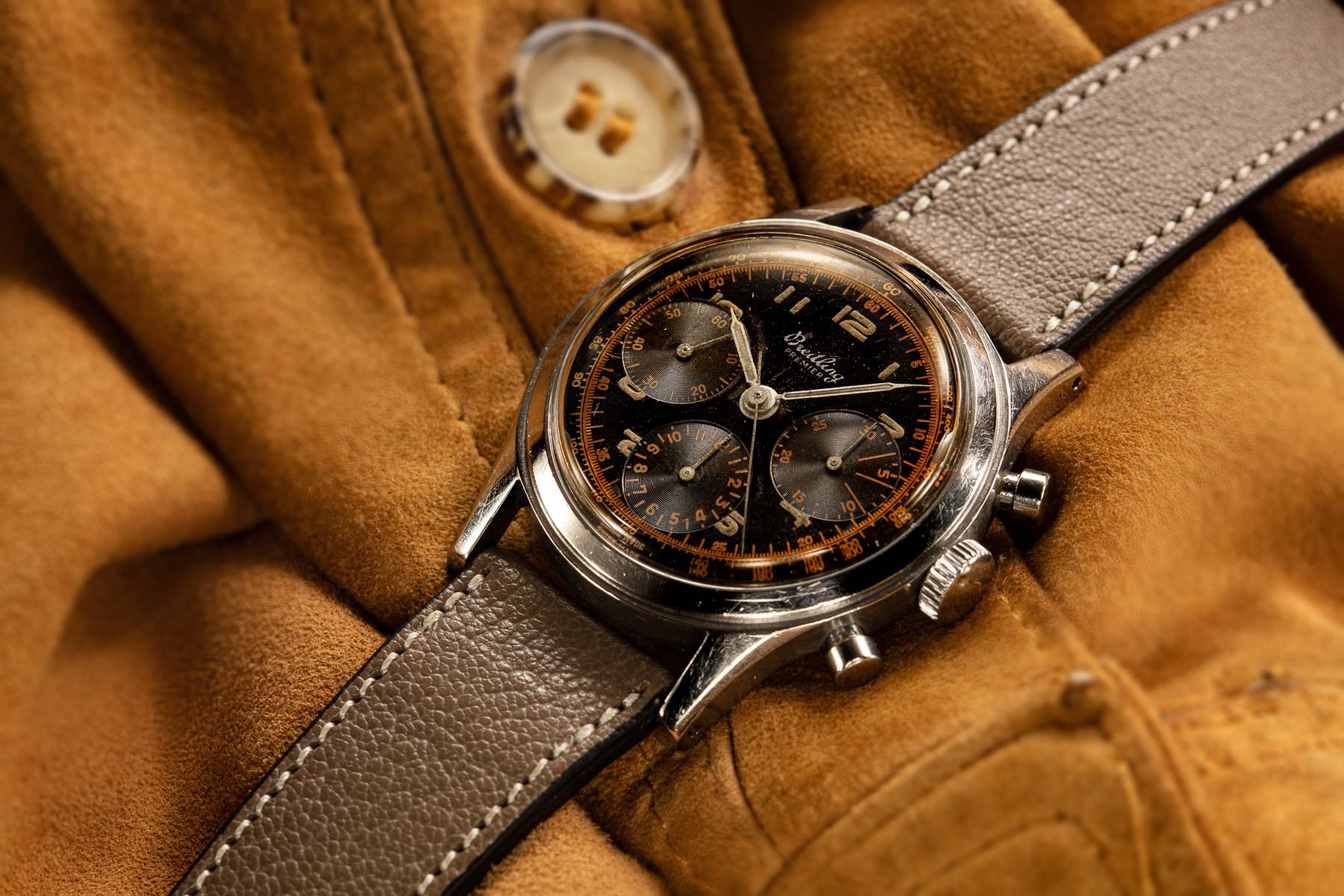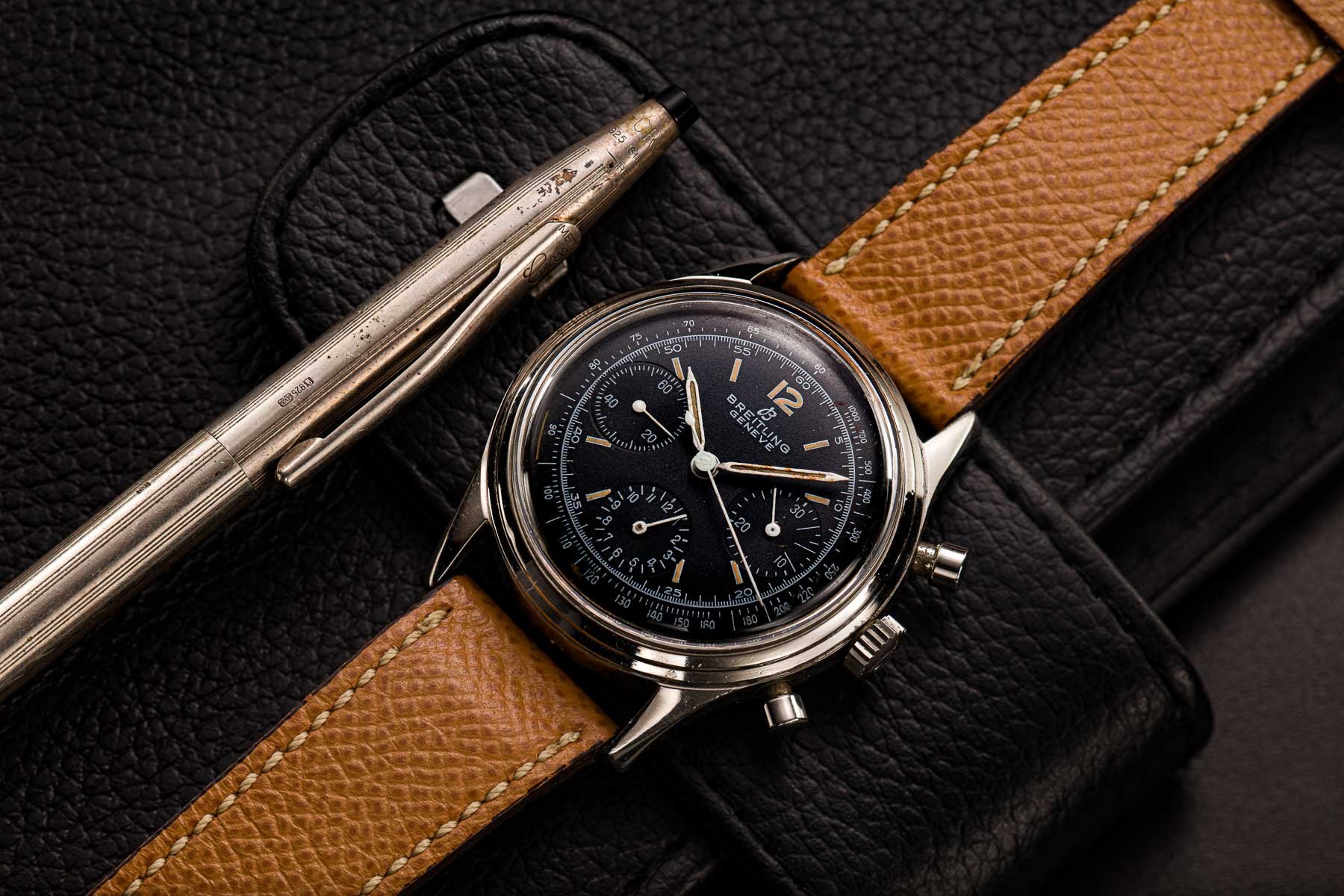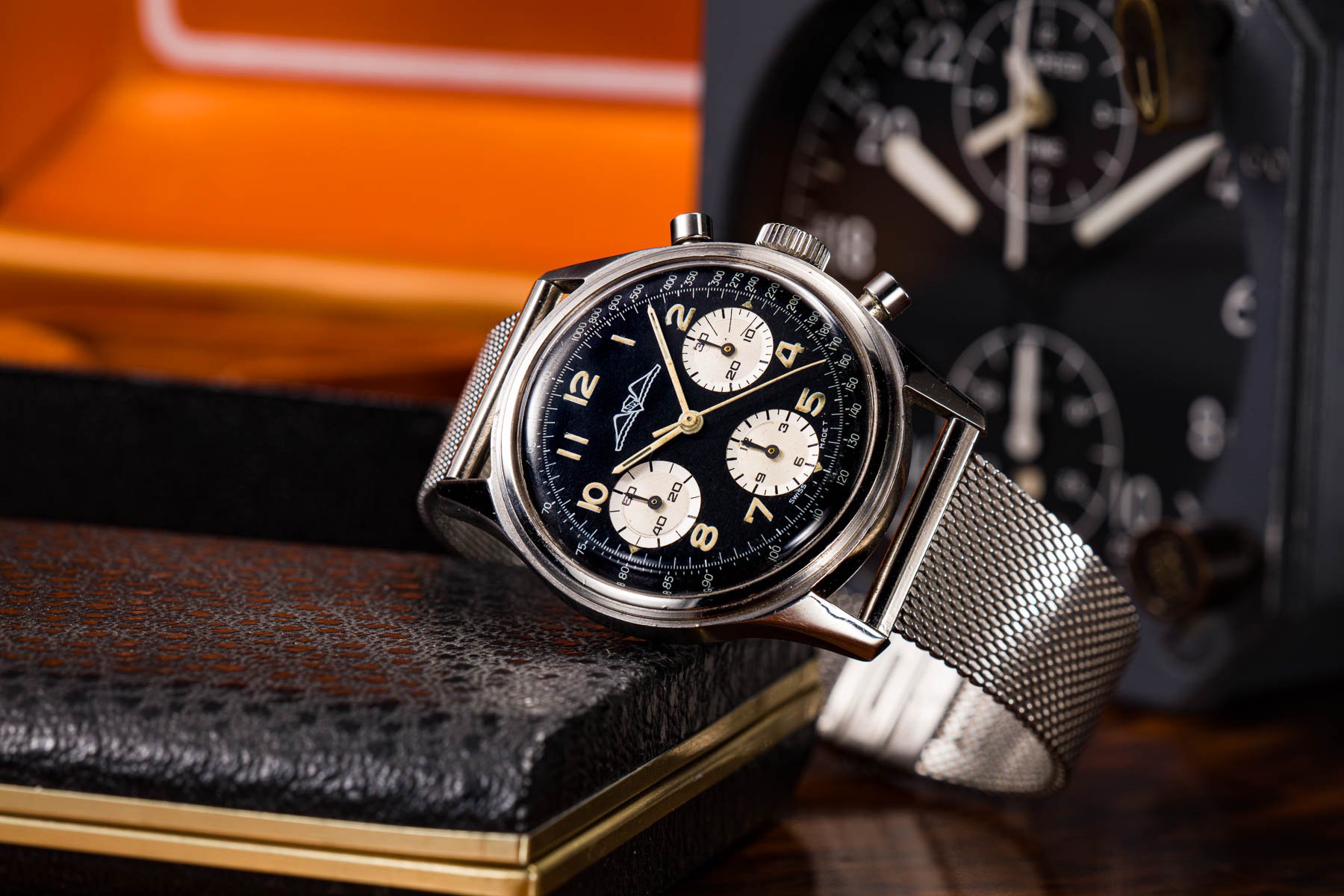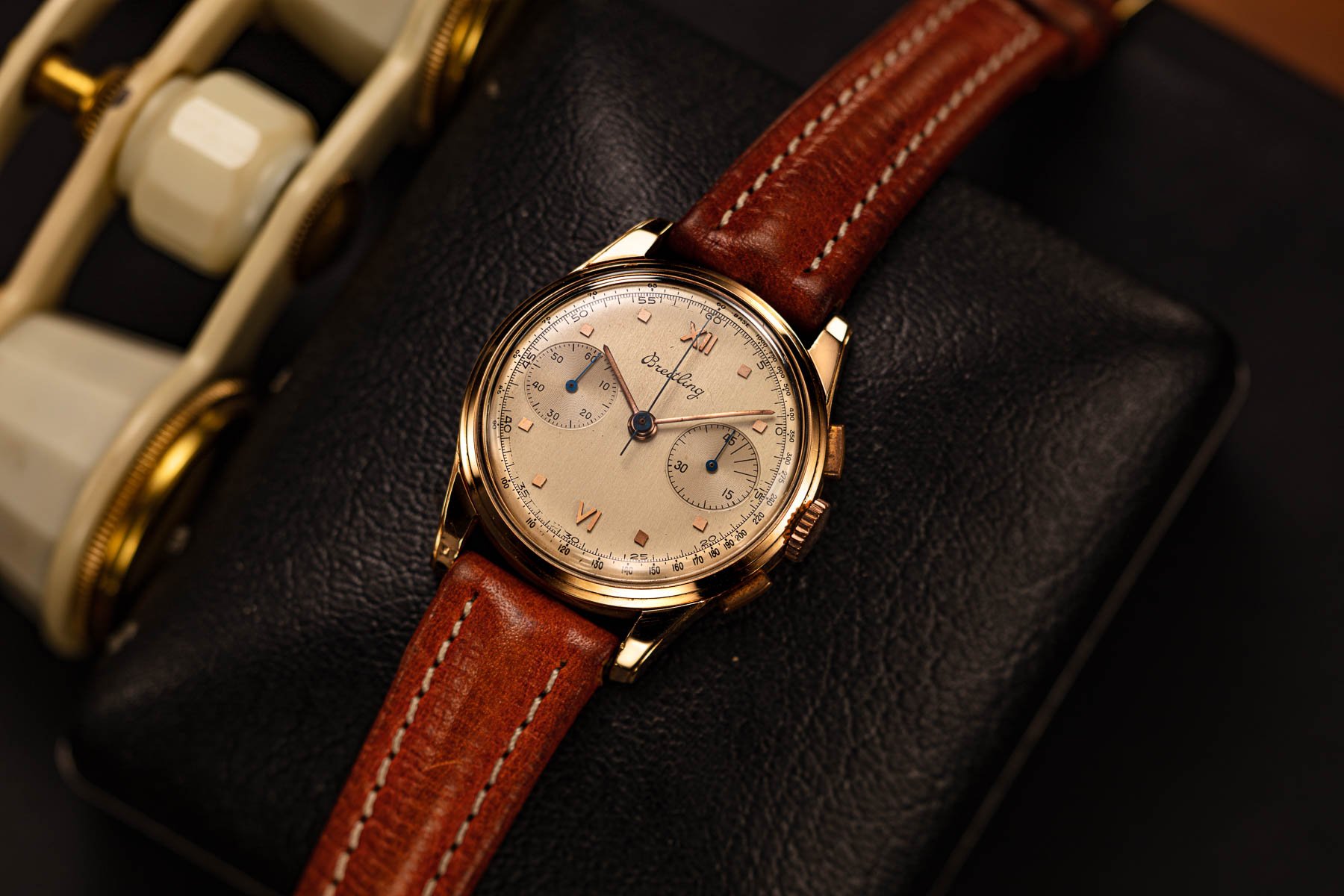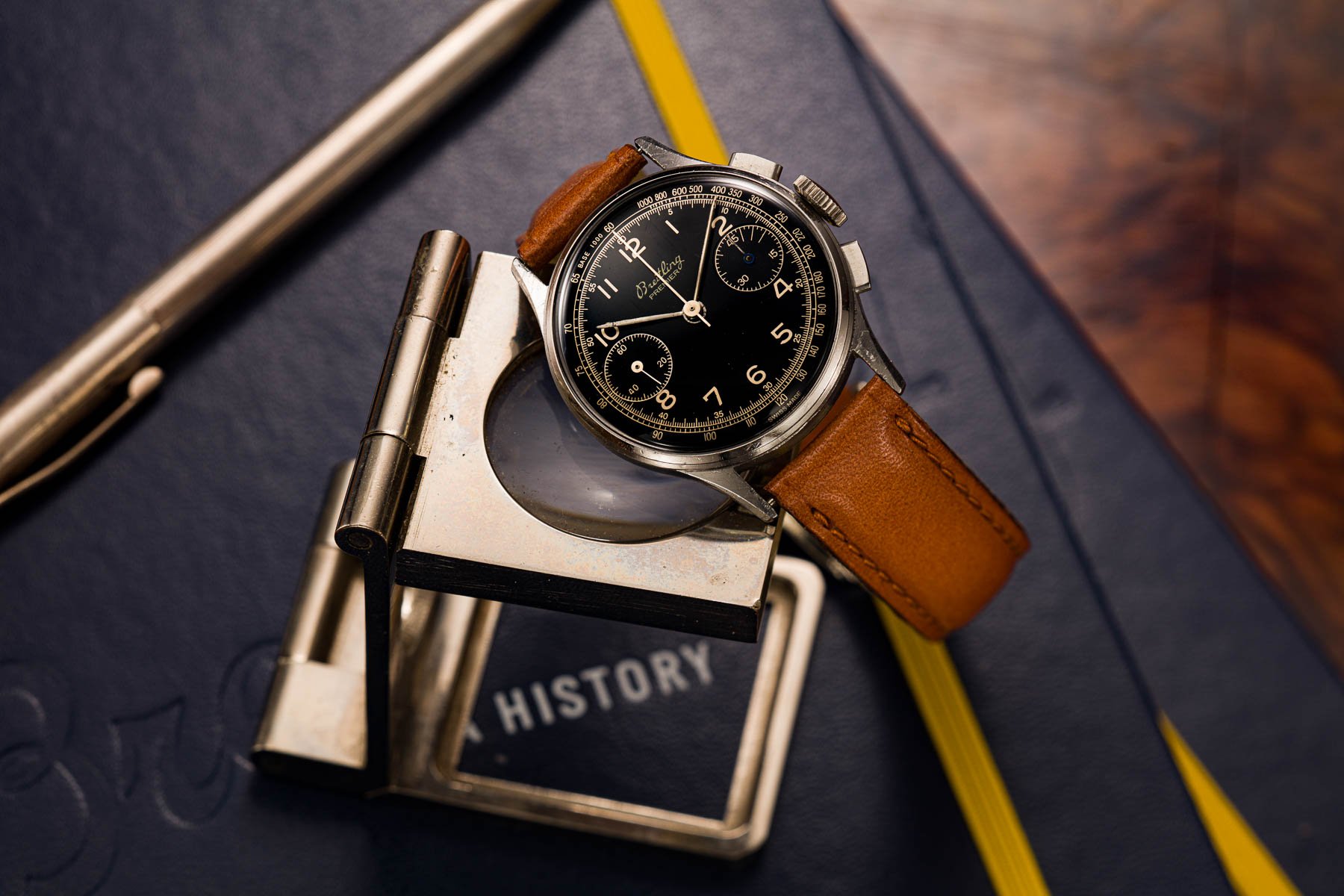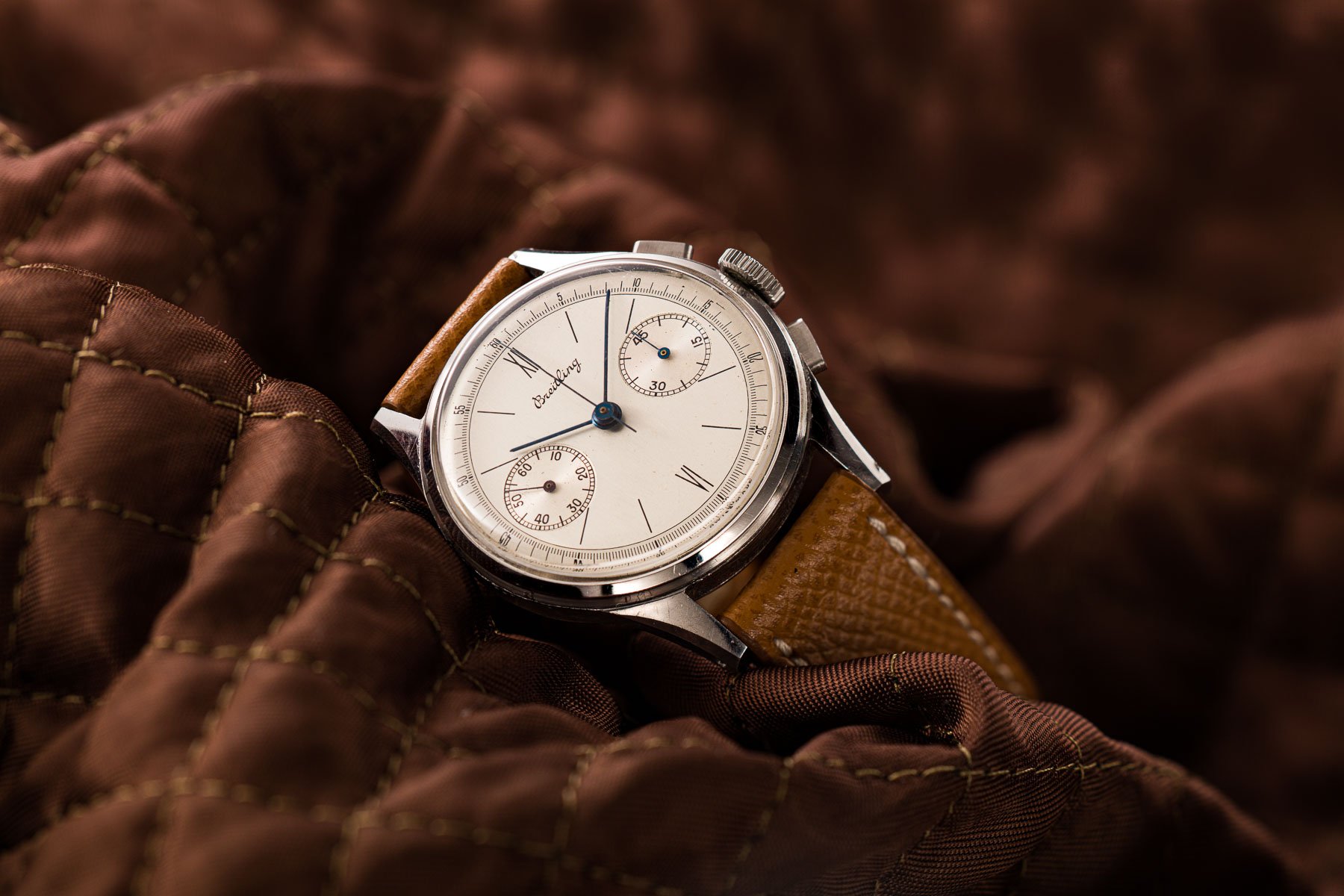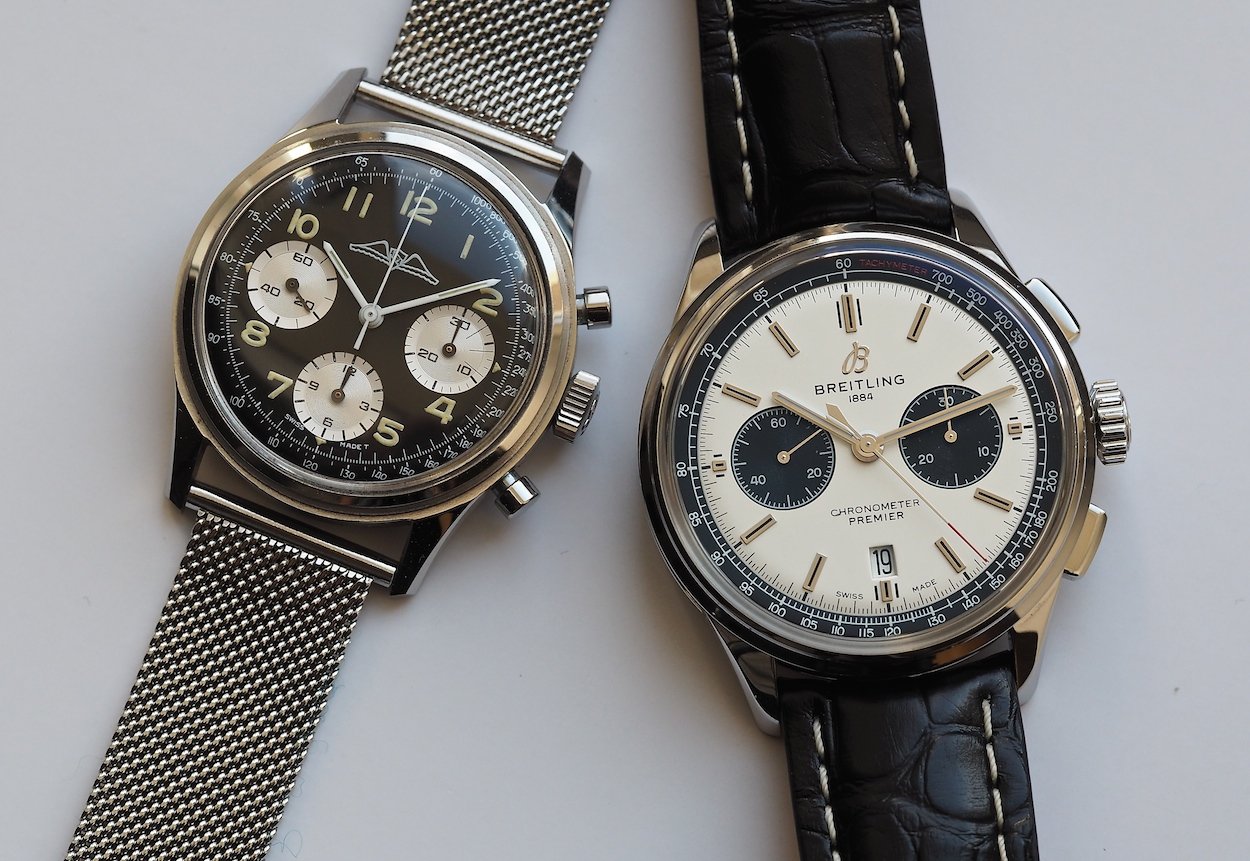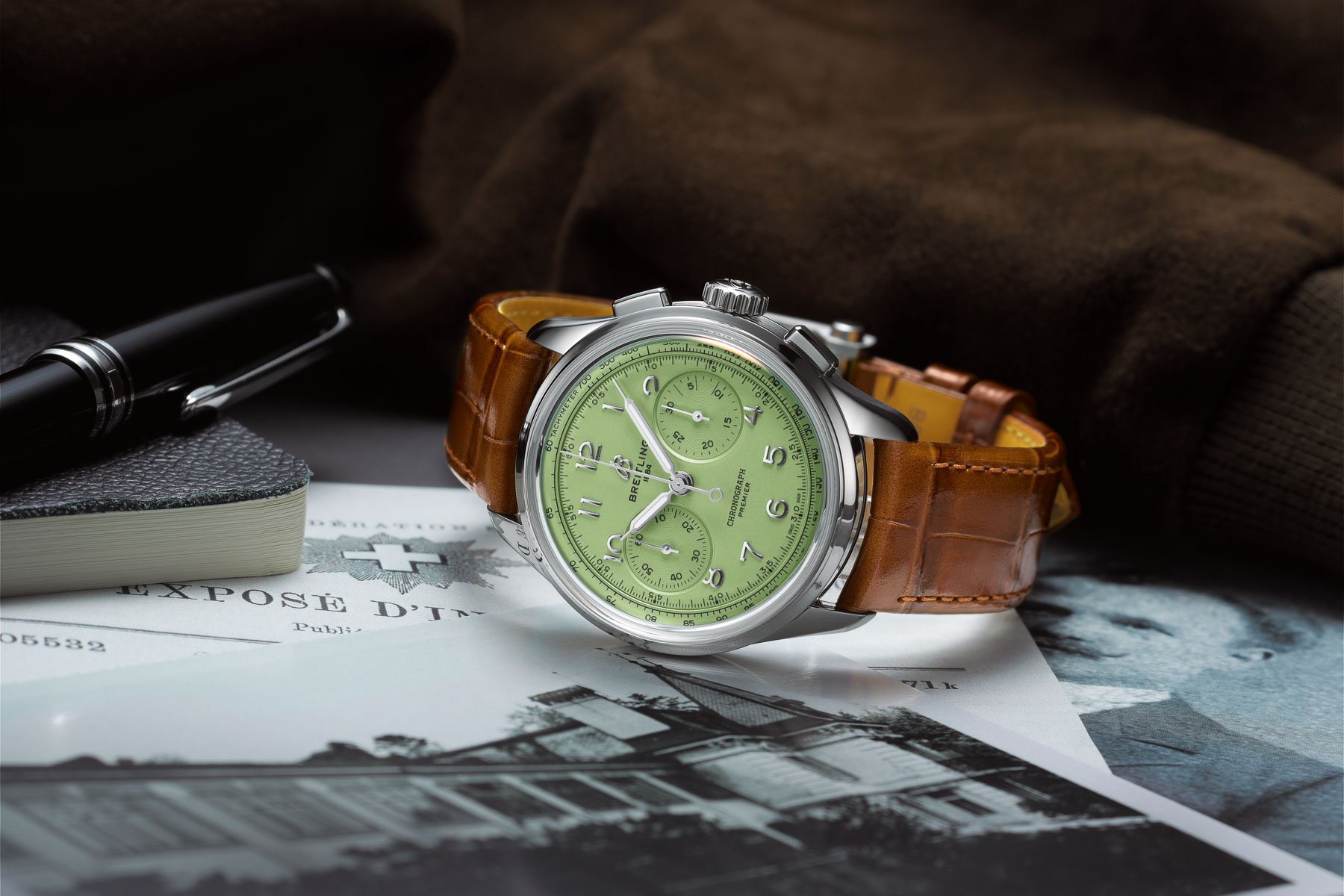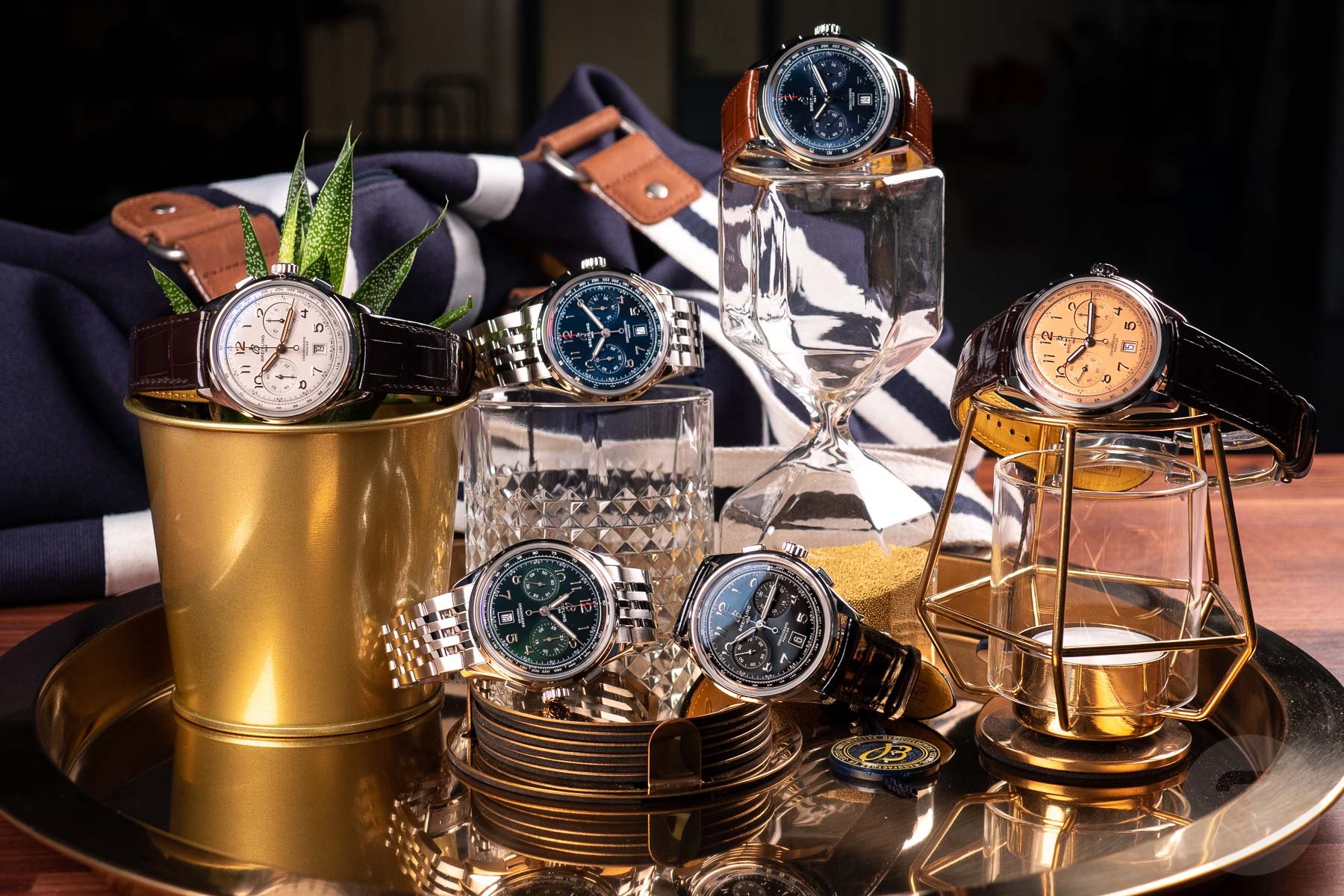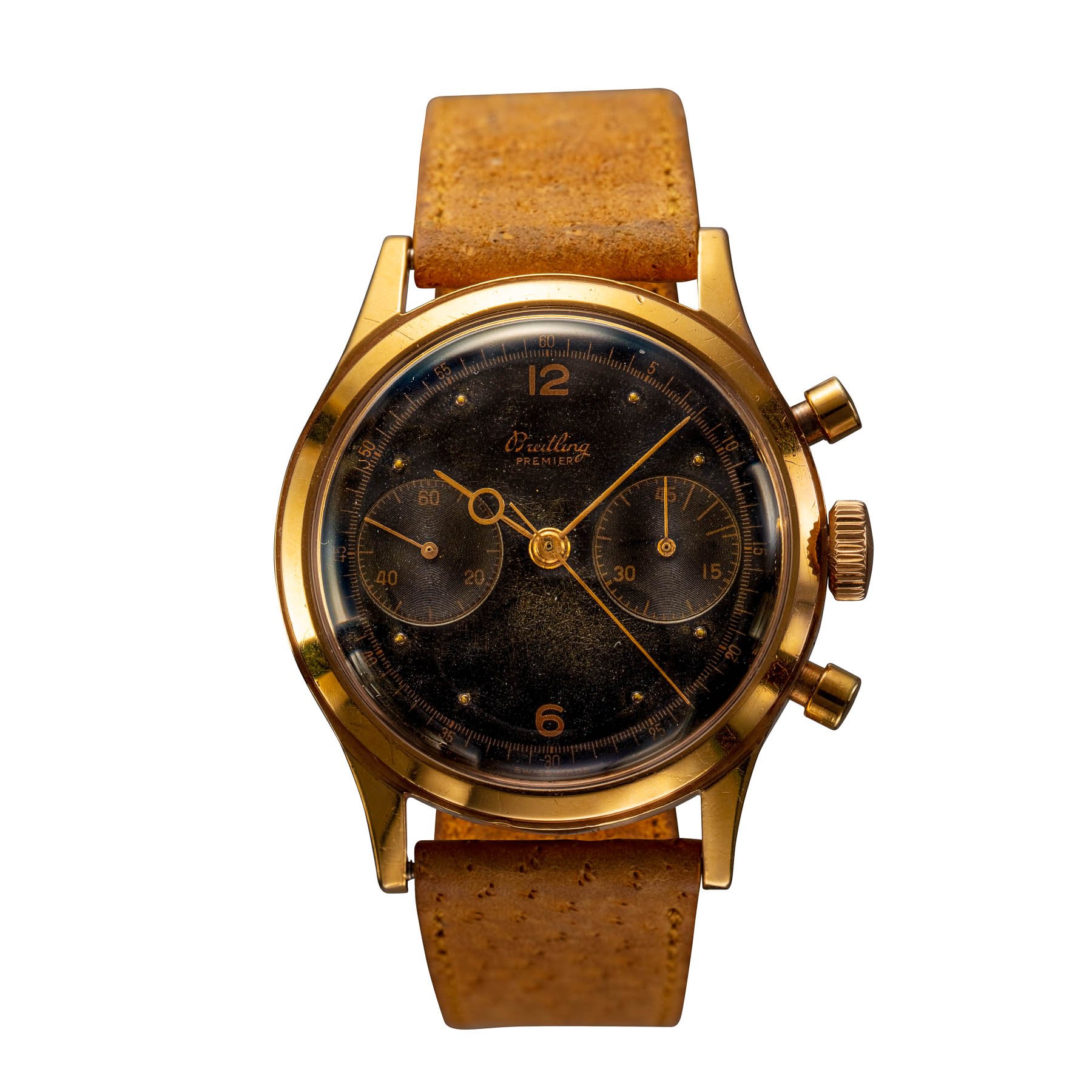The Breitling Premier — A Legacy Of Beautiful Chronographs
The Breitling Premier debuted 80 years ago as the flagship line for the brand. A fascinating variety of models were produced over several decades. In 2018, the Premier line returned with top-of-the-line models, and Breitling continues to introduce beautiful new variants each year. In this article, we take a look at the history of the Premier along with some of the most enchanting models.
As a junior watch collector, I first met Fred Mandelbaum roughly a decade ago. I had the opportunity to learn from him about some of the greatest watches, especially chronographs, produced. During my education, which continues to this day, it was hard not to become infected by Fred’s love for Breitling. Legendary watches such as the Navitimer were the most recognizable pieces, but Fred continuously talked about the Breitling Premier. This was a line of watches that I wasn’t familiar with at the time because Breitling had stopped making them some 40 years prior.
A dinner that changed everything
I’ll never forget an early meal with Fred in his hometown of Vienna, Austria. It was at this meeting that Fred brought a dizzying array of Breitling Premier examples, and frankly, they blew my mind. This was Breitling? Let’s not forget that this was well before the current renaissance that Breitling is enjoying under George Kern’s leadership. But yes, Breitling had, in fact, produced some of the most stunningly beautiful chronographs under the Breitling Premier name. Ultimately, I was able to find and purchase a vintage Premier, and to this day, it remains one of my favorite vintage watches. The case, the dial, and the movement are all as well crafted as anything else that I own, and I think that says a lot. Would I like to own more Breitling Premier models? You bet, but a certain person from Vienna has cornered the market — on the vintage models at least!
As you scroll through this article, I hope that you’ll also find these watches as beautiful as I do. In vintage terms, I do not know of another brand that made such a wide-ranging series of gorgeous chronographs. The list of watches that one could add as possible cornerstones for their collection is incredibly long. Aside from showing many of these watches to me in person, Fred was also generous enough to provide these photos for the article. Furthermore, I’d be remiss in not mentioning that Fred has written a new book titled Premier Story: Breitling Premier, Duograph and Datora. It’s an amazing and long overdue ode to these fabulous watches.
The Breitling Premier from the beginning until the early ’70s
From 1943 until the early 1970s, Breitling produced the Premier in an astounding number of variations. The case diameters ranged from below 30mm to 38.5mm. Case materials spanned chrome, to stainless steel, and even included 18K gold. The watches typically came in either two- or three-register formats, and the majority housed Venus hand-winding movements like the 178 and 175, although some early models used Valjoux calibers. You’ll note that all models, no matter their ultimate intent, were distinctly legible with incredible finishing. Let’s take a look at just a few of the standout models.
Rugged designs well before their time, such as the reference 765
The Breitling Premier name encapsulated chronographs with many intentions. Some, such as the 38mm 765 above, were truly special. These watches were created by the brand’s “Huit” department, which was responsible for creating reliable dash-mounted timers for airplanes. As a result, watches like this were tested under extreme temperatures and in high-vibration circumstances to prove their durability. Note the round pushers on this watch. This is a giveaway that the model has a “waterproof” case. All of these aspects aside, I walk away with some profound, undeniable feelings. Firstly, this watch is gorgeous! Second (and this is true for most Premiers), remove the patina, and this watch could easily attract customers today. What a stunner!
Breitling also produced a light-dialed counterpart that you can see further above. It’s a wonderful counterpart to the darker-dialed version. The details are similar, but note how the syringe hands are slimmer. It’s a reminder that there are so many small differences between these models and evidence that the brand was always tweaking its designs to achieve perfection.
The Premier 765 from 1951 is yet another amazing variant showing how Breitling continued to evolve the theme. This model dates to 1951 but looks like a watch that could have debuted during the following decade. The dial is all black, and the lumed indices are hashes instead of Arabic numerals. It’s yet another example of a standout chronograph that any brand would like to have in its back catalog.
One of my favorite Breitling Premier models is the 765 AOPA made for the Aircraft Owners and Pilots Association. It’s the last model in the line and shares the same large 38mm footprint with models from decades prior. The watch has an incredibly clean look and is unique with its lack of the Breitling signature on the dial. The slim pencil hands are a serious departure from the syringe hands of earlier models. Also, like the rest of the 765s before, it also utilizes the Venus 178 movement.
The golden era also meant formal watches with style
Breitling also created Premiers in non-waterproof cases. These are easy to identify due to their rectangular pushers. In my view, if they are in gold, they’re even more special. Gold models were rare when produced, and today, there are few survivors in fabulous condition. A model such as the gold 36mm 782 above contains a unique “knee-lug” case and a dial that would look at home in watches from some of the most luxurious brands. In person, details such as the applied indices and even the printing are flawless. We’ve never thought of Breitling as anything but a high-level brand, but these watches were truly something to behold. Furthermore, examples like this 782 show how versatile Breitling was in making pieces for all occasions.
Even some of the smallest Breitling Premier models are amazingly detailed and worth a second look. The 32.6mm reference 789 above has perfect balance and manages to add a tachymeter ring while coming off as a dressier example. A no-lume dial and printed numerals help tie together the overall look. If you’re following the photo captions, you’ll notice that in the ’40s, there were already several different case sizes. This wasn’t commonplace during this period, and most companies tended towards making watches with small diameters. Breitling, however, felt it was crucial to offer options for those with different wrist sizes while also considering certain applications that might require a larger dial and greater legibility. These watches may look vintage today, but it is clear that the ideas behind the Premier were quite innovative.
If someone were describing the steel Premier 760 model above, I’d probably skip right over it due to the sheer mention of Roman numerals. This would prove to be a foolish move because this is a beautiful watch. View the clarity of this design, and it’s not some stodgy dress chronograph. This watch has style! Plus, even if it is a more sparse affair, it’s versatile and can work in all situations.
The modern era — a triumphant return
There was a brief return for the Breitling Premier in the late ’90s, but I prefer to focus on the present since 2018 because the watches since this time have truly been special. When Georges Kern took the reigns at Breitling in 2017, he made a conscious decision to honor the history of the company. Thankfully, the Premier was part of that plan. In late 2018, the first watches debuted, and they were truly deserving of the name. The initial pieces came in a 42mm case using the company’s own chronometer-certified B01 automatic movement. I was fortunate to go hands-on with this watch, and a real takeaway for me was that Breitling was, once again, in great hands.
The 40mm manual-wind Breitling Premier is an absolute gem
In 2021, the Breitling Premier collection grew by getting smaller! That’s right, a 40mm edition was introduced in gold and stainless steel with a variety of dial colors. The key difference from the 42mm automatic models was the use of the in-house B09 hand-wound movement with chronometer certification. Finding a modern manual-wind, dressy chronograph from a large, established brand is incredibly difficult today. This line was and continues to be a unicorn within the current luxury watch space, and I’m impressed that Breitling took the chance to produce these fantastic watches.
The latest releases
Just recently, Breitling updated its 42mm Premier collection. The watches now feature single-color dials that lend them an air of formality and elegance. Also, note the change to applied Arabic numerals when compared to the 42mm models that relaunched the Premier line in 2018. All continue to be powered by the B01 chronometer-certified movement, which includes a quick-set date. The stainless steel model offers five dial variations in salmon, blue, green, black, and cream. All are available on either an alligator strap with a folding buckle or the brand’s trademark seven-row bracelet. A stunning 18K red gold model is also available on either a strap or bracelet and is paired with a cream dial. No matter which model is chosen, all are water resistant to a very useful 100 meters.
A history of stunning chronographs
As mentioned, I think it’s highly worthwhile to pick up Fred’s new book on the Breitling Premier. If you’ve not spent much time researching these models, it will serve as an eye-opening revelation. If you’re interested in new watches, the current lineup of Premiers is equally worth your time. These watches are elegant but capable with modern specifications, and they represent a nice alternative to the overly sporty alternatives that we often see today. Most of all, though, the Premier name is firmly here to stay 80 years after the first watch debuted, and that’s worth celebrating.
For more information on the current Breitling Premier models, visit the official Breitling site.

